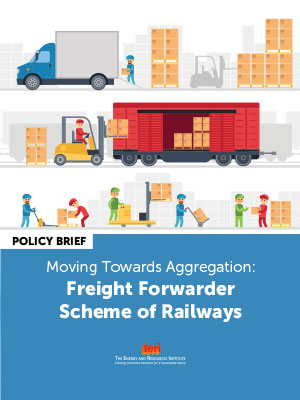Moving towards Aggregation: Freight Forwarder Scheme of Railways
One of the key strategies in the Union Budget 2022 for increasing rail freight market share, aims at facilitating the integration of smaller goods through seamless solutions and multimodal logistics facilities at cargo terminals. Despite an increase in railways' market share to 45% by 2030, a key transport decarbonization strategy for India, it continues to exhibit a gradual decline due to a variety of reasons.
Since Indian Railways has been concentrating on bulk freight traffic since the early 1980s, non-bulk traffic gradually diminished from nearly 40% of the total traffic carried at the time to less than 5% by end of 1999–2000. Proactive policies towards containerisation have resulted in getting back low-volume freight traffic, however, the full potential of railways for carriage of non-bulk freight remains untapped.
While freight forwarders have been present in Indian Railways since the late 1950s, their contribution in the carriage of piecemeal freight traffic has been very marginal. This policy brief examines the functioning of aggregators, undertakes an in-depth analysis of challenges and barriers in the expansion of their role and suggests measures to overcome them.

